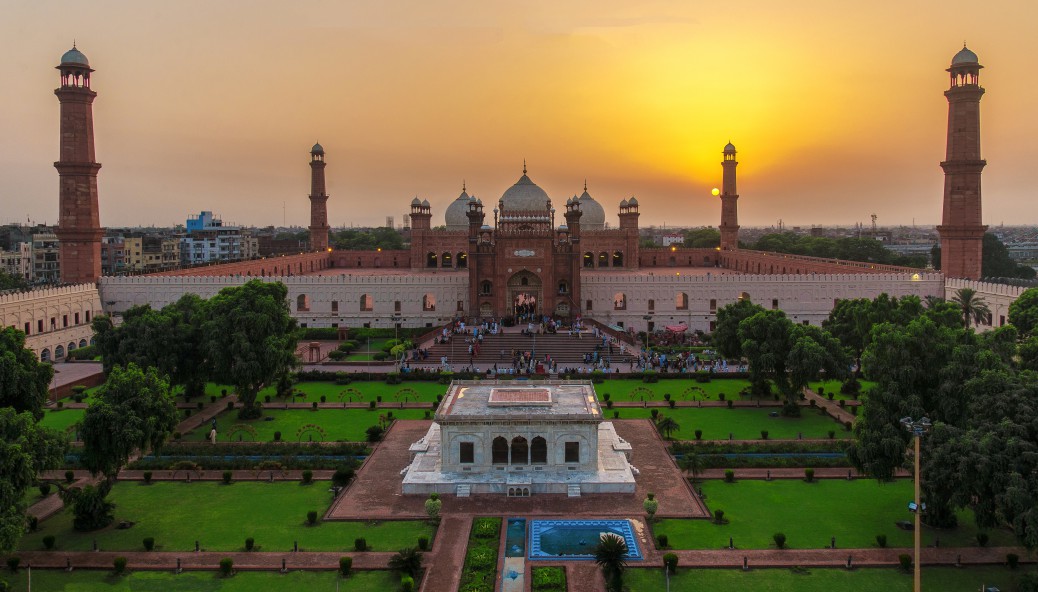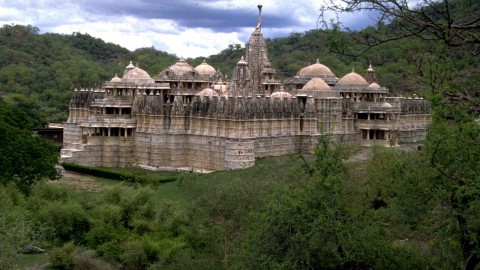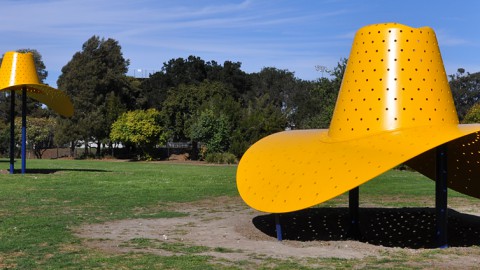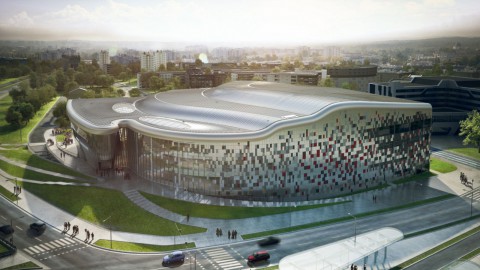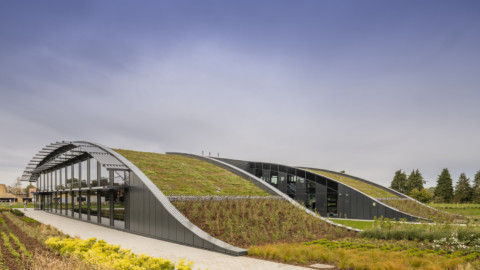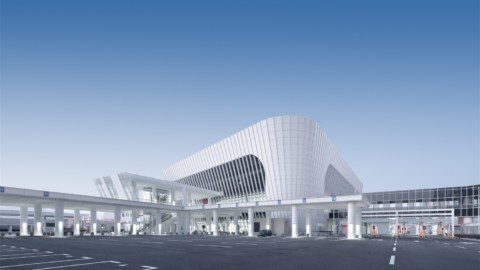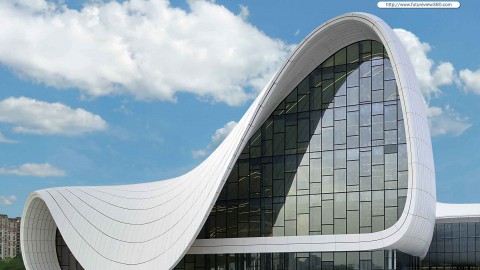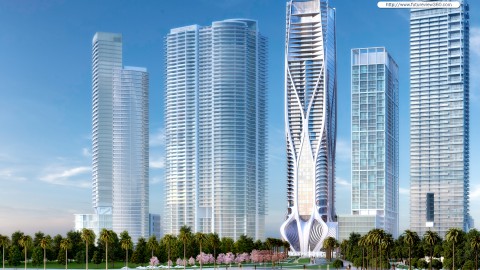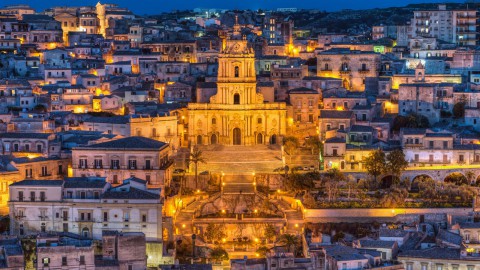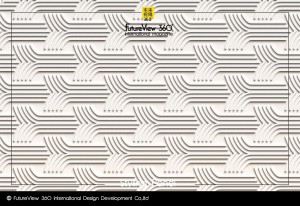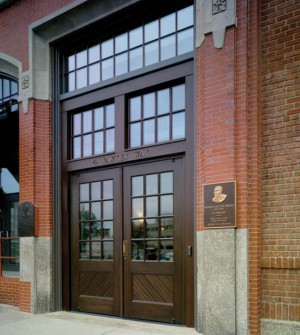Badshahi Mosque
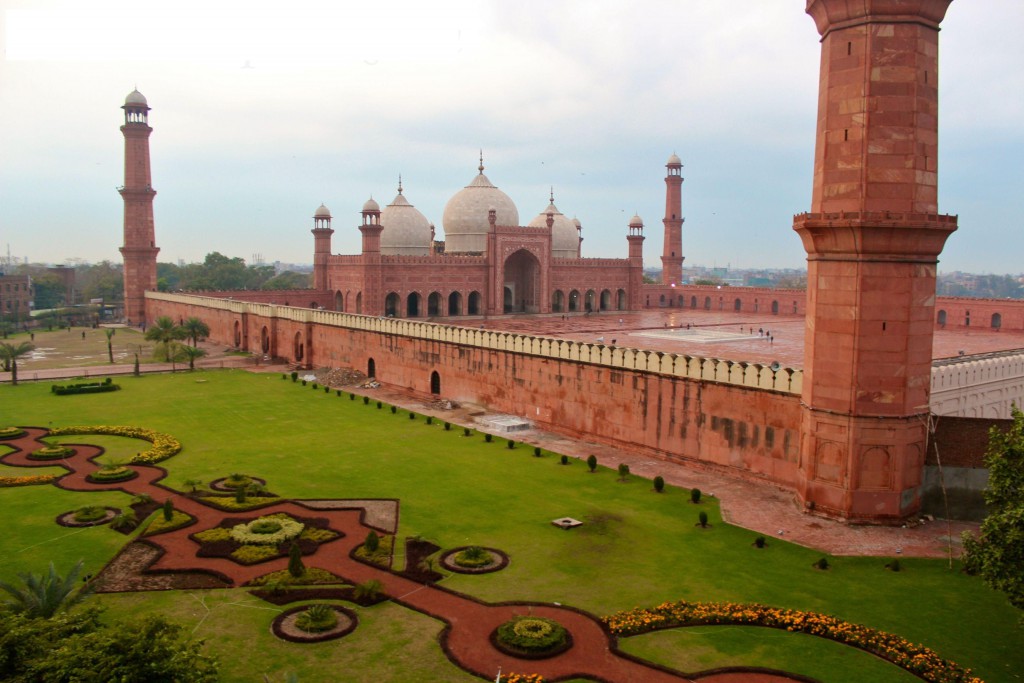
The Badshahi Mosque (Punjabi and Urdu: بادشاہی مسجد, or “Imperial Mosque”) is a Mughal era masjid in Lahore, capital of the Pakistani province of Punjab, Pakistan. The mosque is located west of Lahore Fort along the outskirts of the Walled City of Lahore, and is widely considered to be one of Lahore’s most iconic landmarks.
The Badshahi Mosque was commissioned by Emperor Aurangzeb in 1671, with construction of the mosque lasting for two years until 1673. The mosque is an important example of Mughal architecture, with an exterior that is decorated with carved red sandstone with marble inlay. It remains the largest and most recent of the grand imperial mosques of the Mughal-era, and is the second-largest mosque in Pakistan. After the fall of the Mughal Empire, the mosque was used as a garrison by the Sikh Empire and the British Empire, and is now one of Pakistan’s most iconic sights.
Badshahi清真寺(旁遮普和烏爾都語:بادشاہیمسجد,或“皇家清真寺”)是巴基斯坦旁遮普省首府拉合爾的莫臥兒時代的清真寺。 該清真寺位於拉合爾城寨的拉合爾堡以西,被廣泛認為是拉合爾最具代表性的地標之一。
Badshahi清真寺於1671年由Aurangzeb皇帝委任,該清真寺的建造持續了兩年,直到1673年。該清真寺是莫臥兒建築的一個重要例子,其外部裝飾有雕刻的紅砂岩和大理石鑲嵌。 它仍然是莫臥兒時代最大和最近的大帝國清真寺,也是巴基斯坦第二大清真寺。 在莫臥兒帝國淪陷後,這座清真寺被錫克教帝國和大英帝國用作駐軍,現在是巴基斯坦最具標誌性的景點之一。
Religion
Affiliation:Islam
Branch/tradition:Hanafi
Location
Location:Lahore, Punjab, Pakistan
Country: Pakistan
Geographic coordinates:31°35′17″N 74°18′36″ECoordinates: 31°35′17″N 74°18′36″E
Architecture
Type:Mosque
Style:Indo-Islamic, Mughal
Completed:1673
Specifications
Capacity:100000
Dome(s):3
Minaret(s):8 (4 major, 4 minor)
Minaret height:176 ft 4 in (53.75 m)
Materials:Red sandstone, marble
宗教
單位:伊斯蘭教
科/傳統:哈納菲
地點
地點:巴基斯坦旁遮普省拉合爾
國家:巴基斯坦
地理坐標:31°35’17“N 74°18’36”ECoordinates:31°35’17“N 74°18’36”E
建築
類型:清真寺
風格:印度伊斯蘭,莫臥兒
完成:1673
產品規格
容量:100000
圓頂(S):3
尖塔:8(4個主要,4個未成年人)
尖塔高度:176英尺4英寸(53.75米)
材料:紅砂岩,大理石
Location
The mosque is located adjacent to the Walled City of Lahore, Pakistan. The entrance to the mosque lies on the western side of the rectangular Hazuri Bagh, and faces the famous Alamgiri Gate of the Lahore Fort, which is located on the eastern side of the Hazuri Bagh. The mosque is also located next to the Roshnai Gate, one of the original thirteen gates of Lahore, which is located to the southern side of the Hazuri Bagh.
Near the entrance of the mosque lies the Tomb of Muhammad Iqbal, a poet widely revered in Pakistan as the founder of the Pakistan Movement which led to the creation of Pakistan as a homeland for the Muslims of British India. Also located near the mosque’s entrance is the tomb of Sir Sikandar Hayat Khan, who is credited for playing a major role in preservation and restoration of the mosque.
地點
該清真寺毗鄰巴基斯坦拉合爾城寨。 清真寺的入口位於矩形的Hazuri Bagh的西側,面向著名的拉合爾堡的Alamgiri門,該門位於Hazuri Bagh的東側。 清真寺也位於Roshnai門旁邊,該門是拉合爾最初的十三個門之一,位於Hazuri Bagh的南側。
在清真寺的入口附近有穆罕默德·伊克巴爾墓,這位巴基斯坦人在巴基斯坦廣受尊敬,是巴基斯坦運動的創始人,導致巴基斯坦成為英屬印度穆斯林的家園。 同樣位於清真寺入口附近的是Sikandar Hayat Khan先生的墳墓,他因在清真寺的保護和修復中發揮重要作用而受到讚譽。
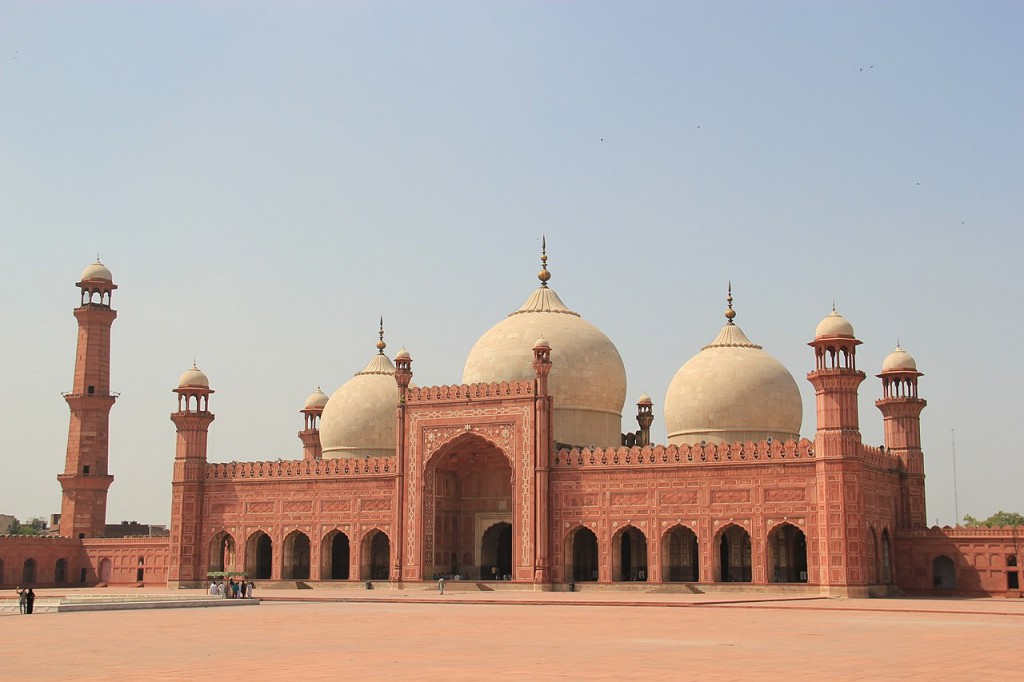
Background
Lahore was considered a strategic center as it protected the empire from potential invaders from the west. The city was made an imperial capital by the earlier Emperor, Akbar, who established the nearby Lahore Fort.
The sixth Mughal emperor, Aurangzeb, chose Lahore as the site for his new imperial mosque. Aurangzeb, unlike the previous emperors, was not a major patron of art and architecture and instead focused , during much of his reign, on various military conquests which added over 3 million square kilometres to the Mughal realm.
The mosque was built to commemorate military campaigns against the Maratha king Chhatrapati Shivaji, although construction of the mosque exhausted the Mughal treasury and weakened the Mughal state. As a symbol of the mosque’s importance, it was built directly across from the Lahore Fort and its Alamgiri Gate, which was concurrently built by Aurangzeb during construction of the mosque.
背景
拉合爾被認為是一個戰略中心,因為它保護帝國免受來自西方的潛在入侵者的侵害。 這座城市是由早期的皇帝阿克巴爾(Akbar)建造的帝國首都,他建立了附近的拉合爾堡(Lahore Fort)。
第六位莫臥兒皇帝奧朗則布選擇拉合爾作為他的新帝國清真寺的所在地。 與以前的皇帝不同,奧朗則布並不是藝術和建築的主要贊助人,而是在他的大部分統治期間集中精力進行各種軍事征服,增加了超過300萬平方公里的莫臥兒王國。
這座清真寺的建造是為了紀念對Maratha國王Chhatrapati Shivaji的軍事行動,儘管清真寺的建設耗盡了莫臥兒王朝的財政部並削弱了莫臥兒國家。 作為清真寺重要性的象徵,它直接建在拉合爾堡及其阿拉姆吉里門對面,該門由奧朗則佈在清真寺建造期間同時建造。
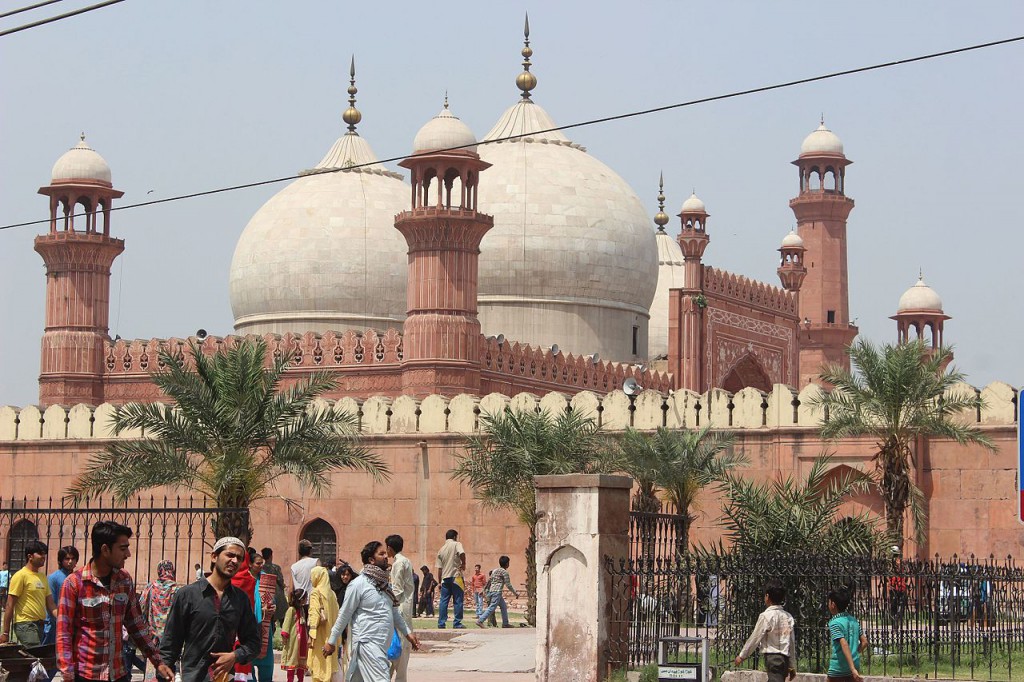
Construction
The mosque was commissioned by the Mughal Emperor Aurangzeb in 1671, with construction overseen by the Emperor’s foster brother, and Governor of Lahore, Muzaffar Hussein – also known by the name Fidai Khan Koka. Aurangzeb had the mosque built in order to commemorate his military campaigns against the Maratha king Chhatrapati Shivaji. After only two years of construction, the mosque was opened in 1673.
施工
這座清真寺於1671年由莫臥兒皇帝奧朗則布委託建造,由皇帝的寄養兄弟和拉合爾州長Muzaffar Hussein(也稱為Fidai Khan Koka)負責監督。 奧朗則佈建造了清真寺,以紀念他對馬拉塔國王賈特拉帕蒂·希瓦吉的軍事行動。 經過短短兩年的建設,清真寺於1673年開業。
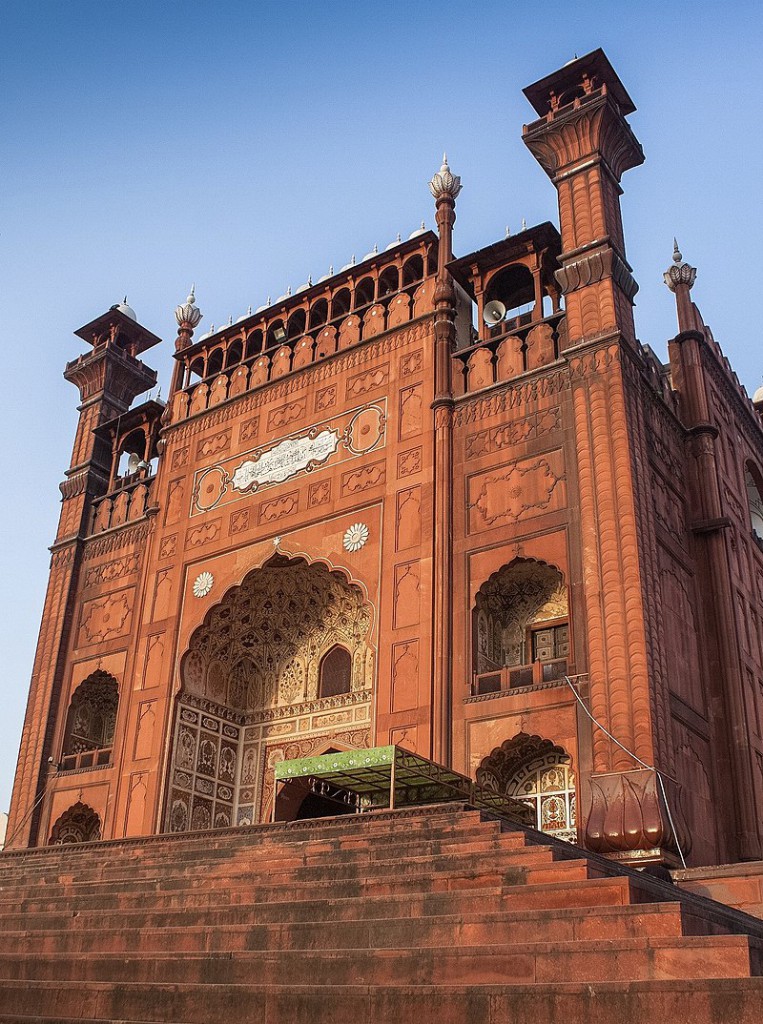
Architecture
As a gateway to the west, and Persia in particular, Lahore had a strong regional style which was heavily influenced by Persian architectural styles. Earlier mosques, such as the Wazir Khan Mosque, were adorned in intricate kashi kari, or Kashan style tile work, from which the Badshahi Mosque would depart. Aurangzeb chose an architectural plan similar to that of Shah Jehan’s choice for the Jama Masjid in Delhi, though built the Badshahi mosque on a much larger scale. Both mosques feature red sandstone with white marble inlay, which is a departure from typical mosque design in Lahore, in which decoration is done by means of intricate tile work.
Entryway of the complex
Entrance to the mosque complex is via a two-storey edifice built of red sandstone which is elaborately decorated with framed and carved paneling on each of its facades.The edifice features a muqarna, an architectural feature from the Middle East that was first introduced into Mughal architecture with construction of the nearby and ornate Wazir Khan Mosque.
The mosque’s full name “Masjid Abul Zafar Muhy-ud-Din Mohammad Alamgir Badshah Ghazi” is written in inlaid marble above the vaulted entrance. The mosque’s gateway faces east towards the Alamgiri Gate of the Lahore Fort, which was also commissioned by Aurangzeb. The massive entrance and mosque are situated on a plinth, which is ascended by a flight of 22 steps at the mosque’s main gate which.The gateway itself contains several chambers which are not accessible to the public. One of the rooms is said to contain hairs from the Prophet Muhammad’s, and that of his son-in-law Ali.
Courtyard
After passing through the massive gate, an expansive sandstone paved courtyard spreads over an area of 276,000 square feet, and which can accommodate 100,000 worshipers when functioning as an Idgah. The courtyard is enclosed by single-aisled arcades.
Prayer hall
The main edifice at the site was also built from red sandstone, and is decorated with white marble inlay. The prayer chamber has a central arched niche with five niches flanking it which are about one third the size of the central niche. The mosque has three marble domes, the largest of which is located in the centre of the mosque, and which is flanked by two smaller domes.
Both the interior and exterior of the mosque are decorated with elaborate white marble carved with a floral design common to Mughal art. The carvings at Badshahi mosque are considered to be uniquely fine and unsurpassed works of Mughal architecture. The chambers on each side of the main chamber contains rooms which were used for religious instruction. The mosque can accommodate 10,000 worshippers in the prayer hall.
Minarets
At each of the four corners of the mosque, there are octagonal, three storey minarets made of red sandstone that are 196 feet (60 m) tall, with an outer circumference of 67 feet and the inner circumference is eight and half feet. Each minaret is topped by a marble canopy. The main building of the mosque also features an additional four smaller minarets at each corner of the building.
建築
作為通往西方的門戶,特別是波斯,拉合爾擁有強烈的區域風格,深受波斯建築風格的影響。較早的清真寺,如瓦齊爾汗清真寺,裝飾著錯綜複雜的喀什卡里或卡尚風格的瓷磚作品,巴德沙希清真寺將從那裡出發。 Aurangzeb選擇了一個類似於Shah Jehan選擇德里Jama Masjid的建築計劃,儘管建造了更大規模的Badshahi清真寺。兩座清真寺都以紅砂岩和白色大理石鑲嵌為特色,這與拉合爾典型的清真寺設計背道而馳,其中裝飾是通過錯綜複雜的瓷磚工作完成的。
複雜的入口
清真寺大樓的入口是通過一座由紅砂岩建造的兩層大廈,精心裝飾在每個立面上的框架和雕刻鑲板。大廈的特色是muqarna,中東的建築特色,最初被引入莫臥兒建築與附近和華麗的瓦齊爾汗清真寺的建設。
清真寺的全名“Masjid Abul Zafar Muhy-ud-Din Mohammad Alamgir Badshah Ghazi”在拱形入口上方鑲嵌大理石。清真寺的門戶向東朝向拉合爾堡的阿拉姆吉里門,該門也受到奧朗則布的委託。巨大的入口和清真寺位於一個基座上,該基座在清真寺的主要大門上通過22級台階上升。該門戶本身包含幾個無法向公眾開放的房間。其中一間房間據說包含了先知穆罕默德和他的女婿阿里的毛髮。
庭院
穿過巨大的大門後,一個寬闊的砂岩鋪成的庭院佔地276,000平方英尺,當Idgah作為Idgah時,可容納100,000名信徒。庭院由單一的拱廊拱廊圍繞。
祈禱大廳
該遺址的主要建築也是用紅砂岩建造的,並用白色大理石鑲嵌裝飾。祈禱室有一個中央拱形壁龕,側面有五個壁龕,大約是中央壁龕的三分之一。清真寺有三個大理石圓頂,其中最大的圓頂位於清真寺的中心,兩側是兩個較小的圓頂。
清真寺的內部和外部都裝飾有精美的白色大理石,雕刻有莫臥兒藝術共同的花卉設計。 Badshahi清真寺的雕刻被認為是莫臥兒建築的獨特精美和無與倫比的作品。主室兩側的房間包含用於宗教教學的房間。清真寺可容納1萬名禮拜堂的信徒。
尖塔
在清真寺的四個角落的每個角落,都有八角形的三層尖塔,由紅砂岩製成,高196英尺(60米),外圍為67英尺,內圓周為八英尺半。每個尖塔都有一個大理石天篷。清真寺的主樓還在建築的每個角落增設了四個較小的尖塔。
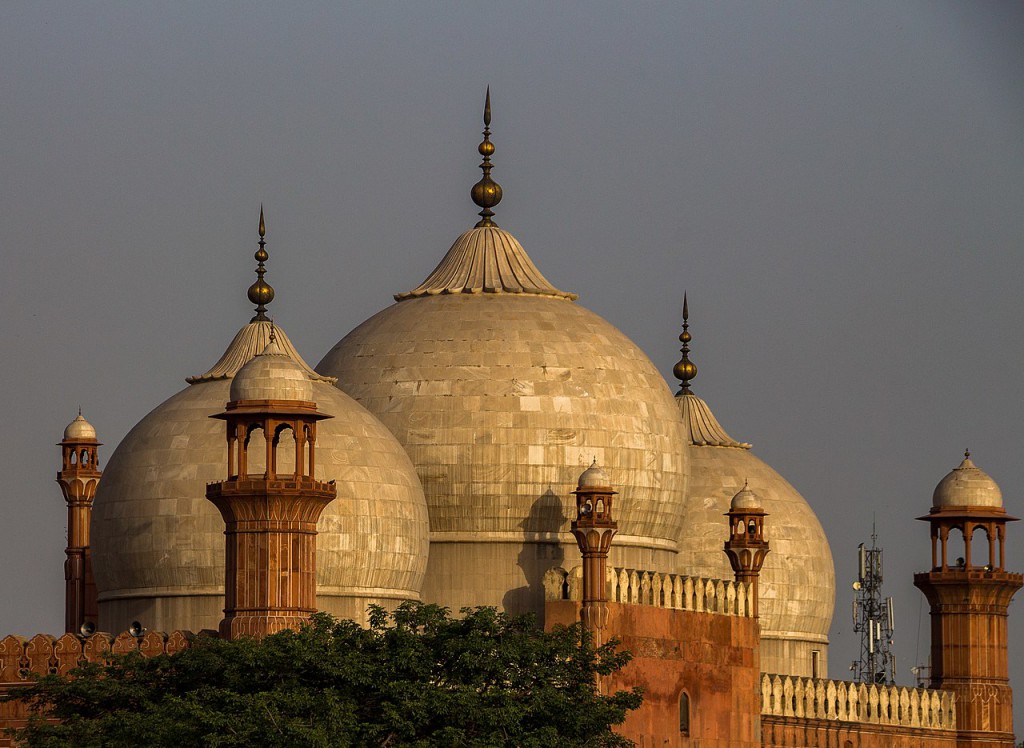
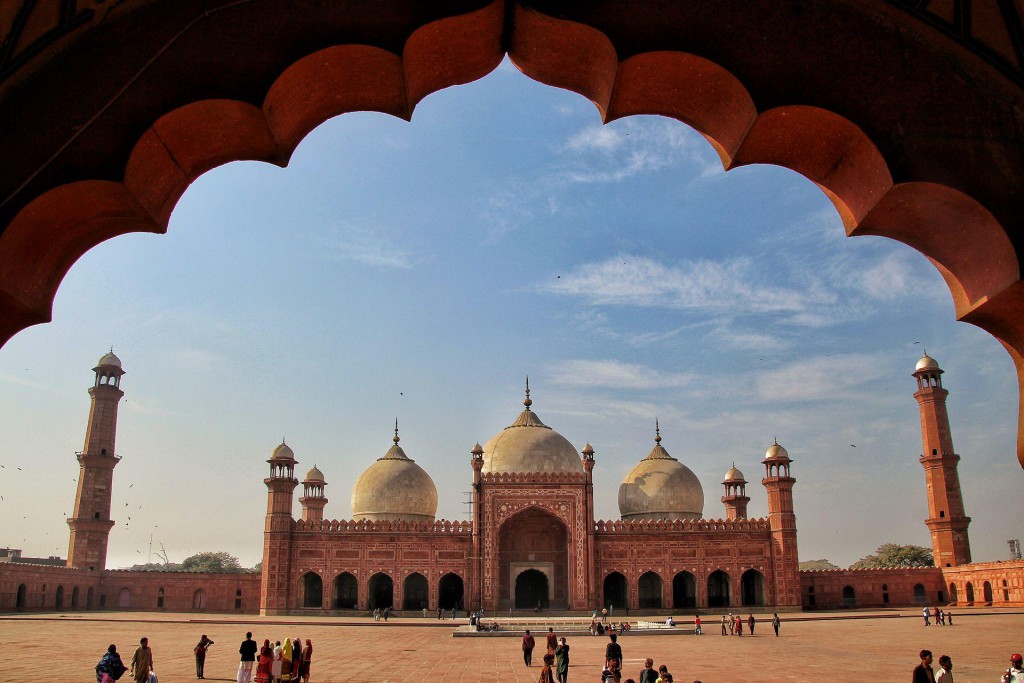
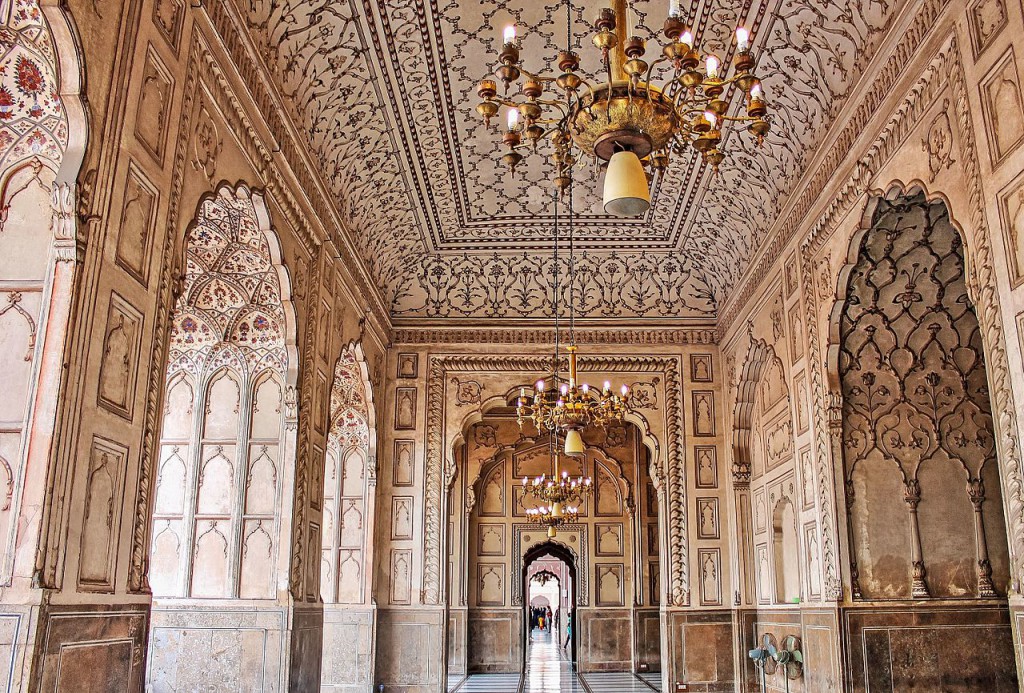
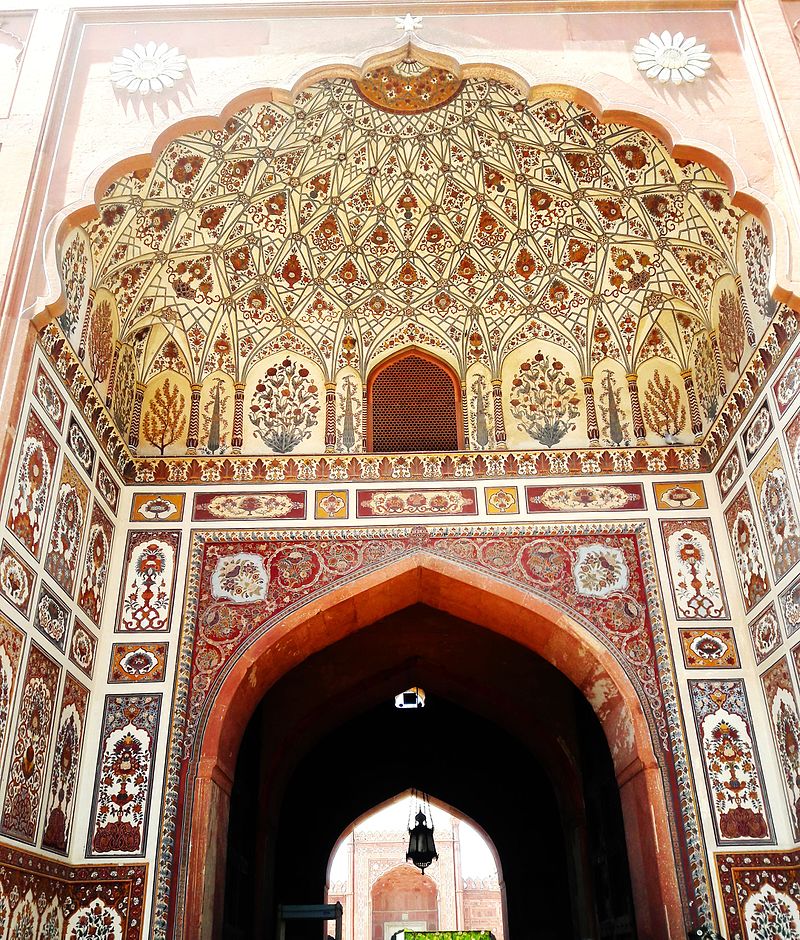
FROM:https://en.wikipedia.org/wiki/Badshahi_Mosque
FROM:MUSLIM CALL TO PRAYER | Badshahi Mosque | John Fontain
FROM:Badshahi Mosque Drone Shot 4K
FROM:Best nikkah video Badshahi Mosque Lahore Pakistan
Don’t you think it’s addictive?
Want to know more about the beauty of architecture?
Come and join our members to explore the beauty of architectural design.
覺得看得不過癮嗎?
想要知道更多建築之美嗎?
快來加入我們的會員,一同探索建築設計之美。
The above article is purely for appreciation and sharing purposes, as well as the construction of new technology and the public can be in-depth understanding of the information at the same time there are sources, will be able to query, no use of the document as a commercial transaction, if illegal, please inform the We will immediately remove the site, thank you for cooperation.
以上文章純粹作為欣賞及分享用途,以及將建築新型技術傳遞給與大眾能夠深入了解,同時資料還有來源,將可查詢,絕無使用該文件資料作為商業交易行為,如有違法請務必告知該網站我們將立即處理撤除,謝謝合作。

